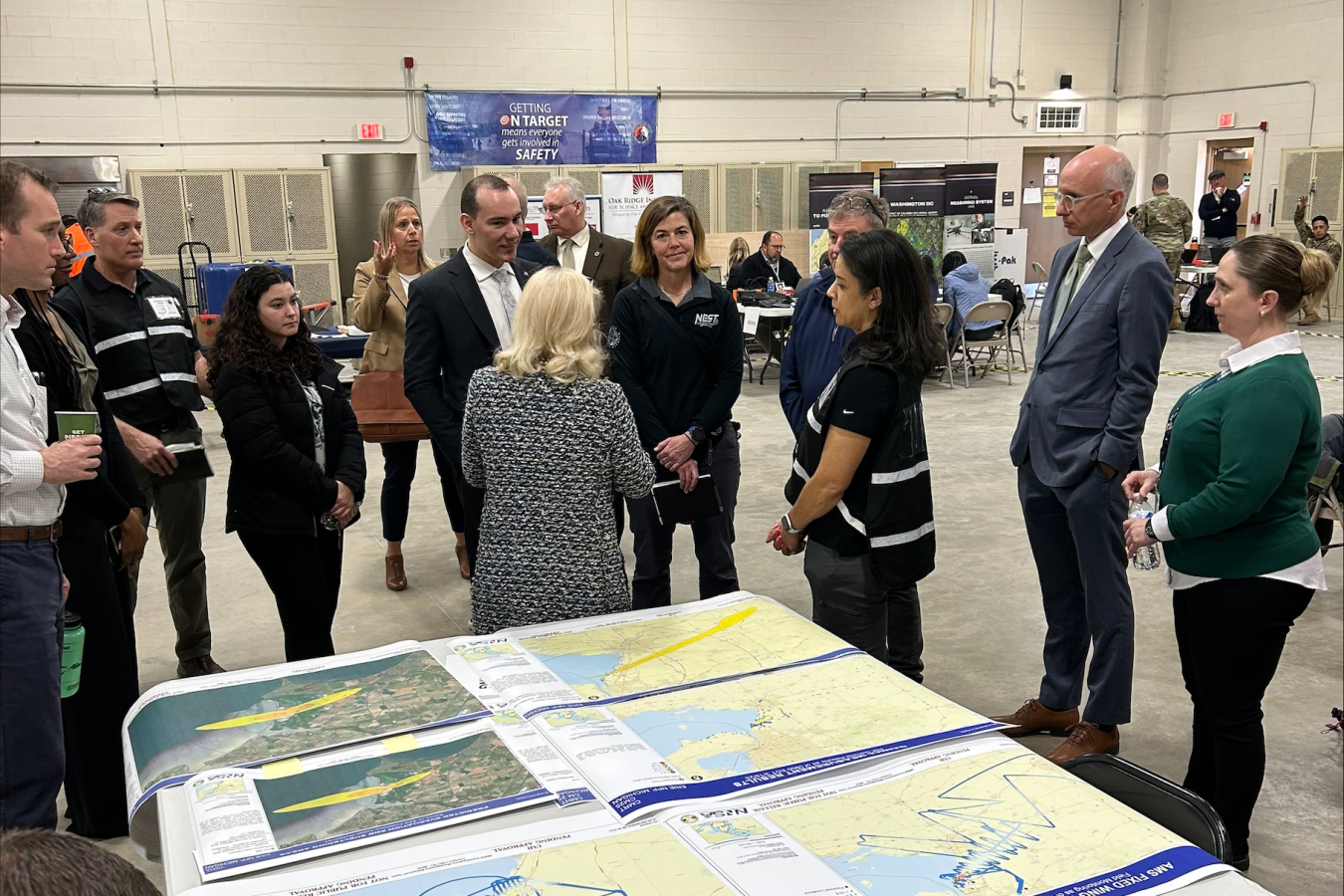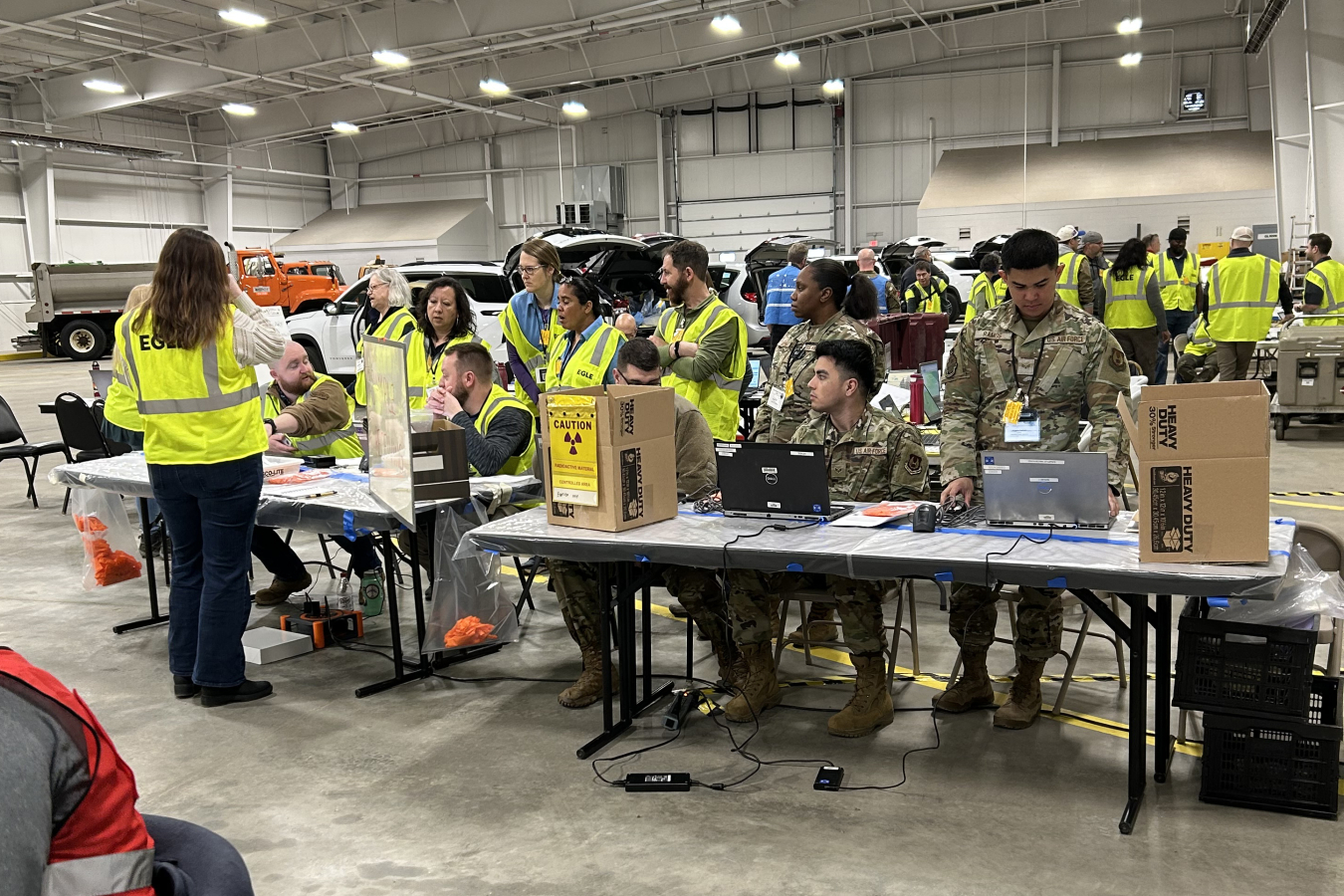Cobalt Magnet 25 brought together more than 3,000 local, state, provincial, and federal participants in Michigan to assess response capabilities to a notional nuclear power plant accident scenario.
National Nuclear Security Administration
May 13, 2025What do you do when faced with a worst-case scenario, such as a nuclear or radiological incident?
Send in the best of the best: NNSA’s Nuclear Emergency Support Team (NEST).
This is precisely what transpired during Cobalt Magnet 25, a radiological incident management exercise organized by the National Nuclear Security Administration (NNSA) in partnership with the Michigan State Police’s Office of Emergency Management and Homeland Security Division. The exercise was held in multiple states and provinces in March 2025.
In the weeklong scenario, more than 70 local, state, provincial, and federal agencies from the United States and Canada responded to a notional nuclear power plant accident scenario, with response personnel practicing mapping potentially contaminated areas, scanning for radiological material, and effectively communicating with the public to protect health and safety.
THE NEST MISSION
NNSA’s NEST is comprised of world-class scientists and technical experts from the Department of Energy’s (DOE) network of national laboratories, plants, and sites who have expertise in a variety of nuclear incident response missions. NEST is responsible for responding to everything from weapons of mass destruction incidents to U.S. nuclear weapon accidents and nuclear reactor emergencies.
The name “Cobalt Magnet” is derived from the letters in “consequence management,” which NEST focused on throughout the exercise –– particularly on measures to protect public health, provide emergency relief, and restore essential services after a disaster, in this case the release of radiological material from a notional nuclear power plant outside Detroit. NEST’s tasks included determining what radiological materials were released from the plant, modeling how weather patterns could have dispersed these materials, and using those projections to inform decisions about evacuations and where to deploy radiological-detection teams – both on the ground and in the air.
“This exercise provided numerous lessons learned that will strengthen our ability to respond to any real-world radiological threats, incidents, or accidents,” said Dr. Wendin Smith, the DOE Deputy Under Secretary for Counterterrorism and Counterproliferation, who embedded with the Cobalt Magnet 25 team at two locations in Michigan. “The combined federal, state, and provincial teams’ impressive capabilities in responding to the notional radiological incident scenario and in developing assessments to provide timely, actionable, and scientifically credible advice to leaders responsible for the public’s health and safety, make us all safer.”
More than a year in the making
The exercise represented the culmination of 18 months’ worth of planning by dozens of organizations with different missions, including: local first responders, state and provincial health departments, the federal Environmental Protection Agency (EPA), and the State Department. Although each organization had a specific role to play that mirrored their real-life missions in a radiological emergency, this was the first time many of the agencies had worked together in an exercise setting.
“Whereas the last major exercise for this community in 2022 involved hundreds of responders from more than 30 government agencies, Cobalt Magnet 25 brought together more than twice as many agencies and participants,” noted Rick Christensen, Director of NNSA’s Office of Nuclear Incident Response. “In addition to providing rapid and effective radiological monitoring and assessment, NEST had to quickly develop working relationships with an incredibly wide array of partners and leaders in order to develop the optimal response to save lives and reduce public impacts from the notional accident.”
Details for Cobalt Magnet 25 were developed over the course of 12 planning conferences, monthly working group meetings, and a weekly meeting by the senior lead planning team. Consequently, the five-day exercise was scheduled down to the minute, with numerous “injects” mimicking the challenging twists and turns a real-world emergency could potentially pose. For example, on Day Three of the exercise, a second “release” of radiological material from the notional plant sent a radioactive plume in the opposite direction of the initial release, potentially spreading small amounts of contamination as far east as Nova Scotia.
“No matter how much we train for a given scenario, any potential real-world radiological incident won’t follow a precise script,” said NEST Operations Program Manager Tamara Van House, who served as exercise director for Cobalt Magnet 25. “It is important to add plot twists to make players think on their feet and hopefully, gain confidence that they can work through unanticipated challenges to mission success.”
Mother Nature even added an inject of her own, as the weather in Michigan went from 70 degrees and sunny on Day Three to snow on Day Four. The sudden return of winter skies complicated the overflight operations of NEST’s Aerial Monitoring System aircraft. However, as Christensen noted, “This is precisely why we regularly conduct these exercises – to develop our response capabilities for radiological and nuclear threats, incidents, and accidents in a variety of realistic and often unpredictable and difficult circumstances.”
Cooperation was key to success
The Cobalt Magnet 25 scenario played out across three states – Michigan, Indiana, and Ohio – and across the border into Ontario, Canada, as radiological detection teams from NNSA and EPA spread out to collect “samples” and local first responders and agencies managed a notional evacuation and worked to restore essential services. These field efforts were directed by the Federal Radiological Monitoring and Assessment Center located at the Michigan Army National Guard Armory in Ypsilanti, Michigan, and the State Emergency Operations Center, located at the Michigan State Police Headquarters in Dimondale.
“The State of Michigan is proud to have served as a lead agency and partner in making this exercise possible for all involved,” said Capt. Kevin Sweeney, Deputy State Director of Emergency Management and Commander of the Michigan State Policy Emergency Management and Homeland Security Division. “Cobalt Magnet 25 provided one of the most realistic and complex training environments we’ve ever undertaken, closely simulating the challenges of a real-world radiological emergency. The lessons learned will be implemented to enhance emergency plans, improve interagency coordination, and ultimately make us stronger and more ready to respond to any future incident together.”
NNSA holds consequence management exercises every two or three years. Since 2012 it has held similar exercises in Missouri, Colorado, Minnesota, Florida, and Texas. As the details of Cobalt Magnet 27 are established, NNSA leaders will build upon the successes and lessons from this exercise.
“Cobalt Magnet 25 was a major capability validation event for NEST,” Christensen said.




